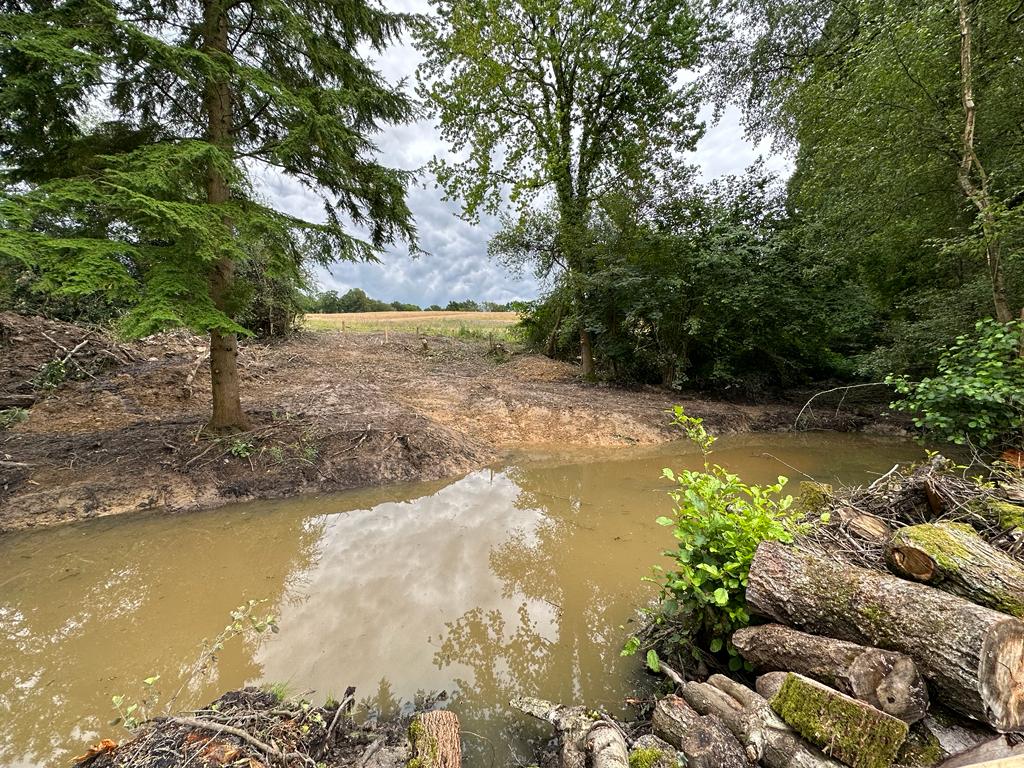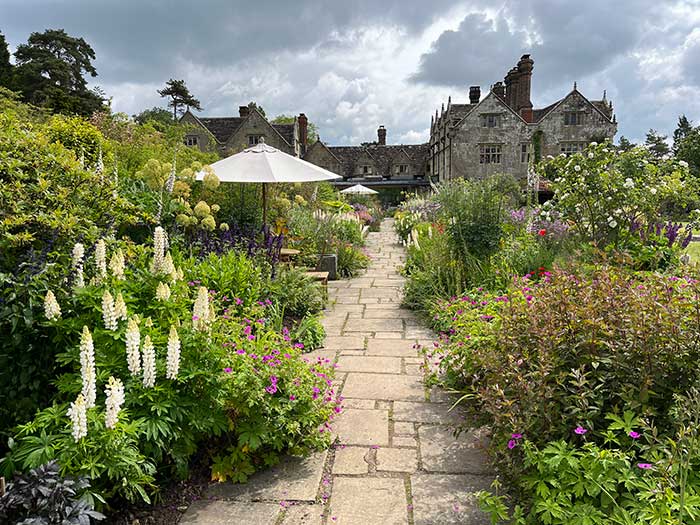William Robinson (1838-1935) was a highly influential figure in the world of gardening.
He created the Gravetye Estate which he left to the nation for the purposes of state forestry and public enjoyment.
Robinson was fascinated by the idea of planting trees from other continents, especially those with the potential for producing timber. Experimentation was one of his great hallmarks of his development of Gravetye.
Today the Gravetye Estate is managed by the William Robinson Gravetye charity. Our vision is to develop a beautiful, sustainable estate dedicated to the understanding and practice of forest and landscape resilience and research. The long-term aim is to develop, improve and perpetuate the woodland environments as a modern reflection of Robinson‘s approach and ethos.
While there are around 25 types of tree at Gravetye, the majority, approximately two thirds are of just three species: Ash, Oak or Corsican Pine. As regular visitors will know, forestry maintenance work is undertaken on an ongoing basis. This includes thinning, felling, and replanting, and is partly funded by the income from the sale of timber.
For a variety of reasons we are now facing a period when an additional programme of forestry work is needed. In part due to climate change the majority of trees at Gravetye are now vulnerable to pests and diseases. These can damage trees and render them dangerous. Many of the trees are already showing signs of damage such as Dieback in Ash and Needle Blight in Corsican Pine. Heavy thinning of the Corsican Pine allows more air circulation which reduces the spread of the disease. Ash Dieback kills the trees and they become dangerous.
What work is needed?
We need to replace some of the trees in the interest of public safety and to sustain the beauty of the Gravetye forest. While most existing tree species will be retained, in keeping with Robinson’s experimental ethos some new types will be introduced. This will increase the resilience of the woods to the influences of Climate Change. The relative proportions of broad-leaved trees and conifers will remain broadly comparable with today, with an increase in conifers of around 5% of the forest area.
Existing woodland areas will be sustained, and areas that are particularly important to biodiversity (including wildlife) will be preserved. These include the streams and valleys to the north of the estate. Where possible the views from the woodland tracks and rides will be improved, in keeping with Robinson’s original vision.
Additionally, there may be some areas of farmland on that will be planted with tree species new to Gravetye as part of a UK based Climate Smart Forestry research project, enabling research that would potentially be of benefit across the country.
Some of the forest tracks will require improvements to enable access for the vehicles and equipment necessary for the works.
What’s the approach?
Where practical the improvements will be achieved without clearing entire areas of the forest. This will involve thinning the weaker specimens of existing trees and planting new trees underneath to gradually renew the forest.
In a few relatively small areas however, it will be necessary to fell all the trees. The affected areas are predominantly Ash and are inflicted by disease to an extent that renders their death inevitable. Felling will both reduce the danger to the public. and through sale of the timber, generate some funds to help with the cost of the works.
Throughout the work programme, conservation, biodiversity and enhancing resilience will be prioritised.
Who’s involved?
We have been fortunate to have had input and advice from national forestry organisations and from other forestry experts including academics researching the field. This has helped incorporate invaluable learning and insights into the plan.
The work will be overseen by Gravetye’s forest manager, who reports regularly to the trustees.
Specialist contractors will undertake the thinning, felling and timber removal operations, as well as improvements to forest tracks.
Planting of new trees and some other works will be done by both volunteers and professional contractors.
How long will this take?
This will be a multi-year programme of work that will take until the end of the decade and possibly longer. Progress depends on the funds raised and on how many volunteers step forwards.
The work will be funded largely by donations supplemented by revenue generated from the sale of timber and planting grants.
The best time of year for forestry work is generally in the Autumn, between September and December. Depending on rainfall and temperature, it can be possible to continue work through to the early Spring.
Work has already started on the first phase of the plan, which has prioritised harvesting timber where thinning, allowing in more air, will reduce disease spread.
The estate will remain open to the public throughout the forestry programme. While for safety reasons it will at times be necessary to restrict access where work is underway, at any one time this will apply only to a relatively limited number of areas.
How can I help?
If you’d like to help, we welcome the support of Gravetye’s visitors, volunteers and friends. While there may from time to time by some short-term disruption, there are considerable long-term benefits to all.
Why not consider volunteering? This can be for as little as half a day, or for a few days a year. Please click here to find out more.
You might want to consider making a donation, please <click here> to find out more. Additionally you could consider making an introduction if your employer or other organisation you are connected with makes charitable donations – either to support development of public amenity in West Sussex, or in the interests of carbon reduction, biodiversity, sustainability or protection of the natural environment.
We welcome comments and feedback;- please click here to comment.
While we are unable to respond to comments individually, all will be read, and we will provide updates on the main themes in future newsletters.




